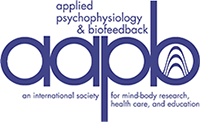The Special Issue
The spring 2022 issue of Biofeedback magazine featured a special issue on evidence-based practice. This summer issue continues the emphasis of that spring issue, featuring book chapters from the upcoming fourth edition of the Association for Applied Psychophysiology and Biofeedback (AAPB) book, Evidence-Based Practice in Biofeedback and Neurofeedback (Khazan, Shaffer, Moss, Lyle, & Rosenthal, in press).
Each of these articles applied the AAPB/International Society for Neuroregulation & Research efficacy standards to an application area for biofeedback and neurofeedback. Complete details of the efficacy standards are available in LaVaque et al.
